Questions given below are based on the given diagram for extractive metallurgy.
(v) This method is known as :
Pyrometallurgy
Parametallurgy
Hydrometallurgy
Semimetallurgy
The correct Answer is:A
Step by step video, text & image solution for Questions given below are based on the given diagram for extractive metallurgy. (v) This method is known as : by Chemistry experts to help you in doubts & scoring excellent marks in Class 12 exams.
Updated on:21/07/2023Topper's Solved these Questions
- GENERAL PRINCIPLES AND PROCESS OF ISOLATION OF ELEMENTSBook:CENGAGE CHEMISTRYChapter:GENERAL PRINCIPLES AND PROCESS OF ISOLATION OF ELEMENTSExercise:Exs 1.1 (Subjective)
Explore 25 Videos
- GENERAL PRINCIPLES AND PROCESS OF ISOLATION OF ELEMENTSBook:CENGAGE CHEMISTRYChapter:GENERAL PRINCIPLES AND PROCESS OF ISOLATION OF ELEMENTSExercise:Exs 1.1 (Objective)
Explore 14 Videos
- GENERAL PRINCIPLES AND PROCESS OF ISOLATION OF ELEMENTSBook:CENGAGE CHEMISTRYChapter:GENERAL PRINCIPLES AND PROCESS OF ISOLATION OF ELEMENTSExercise:Archives (Subjective)
Explore 14 Videos
- ELECTROCHEMISTRYBook:CENGAGE CHEMISTRYChapter:ELECTROCHEMISTRYExercise:Archieves Subjective
Explore 35 Videos
- GRIGNARD REAGENTS AND ORGANOMETALLIC REAGENTSBook:CENGAGE CHEMISTRYChapter:GRIGNARD REAGENTS AND ORGANOMETALLIC REAGENTSExercise:Exercises Archives (Linked Comprehension)
Explore 1 Video
Similar Questions
Each of question given below is based on the given diagram. You have to take the given diagram to be true even if it seems to be at variance with commonly known facts and then decide which of the five alternatives following each question logically follows from the given diagram. The diagram comprises three circles showing people from three different countries who have travelled to either , both or none of the countries mentioned in the diagram.
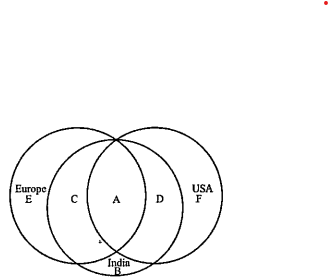
Which of the following represents those Europeans who have travelled only the USA but not to India?
1) Only C
2) Only A
3) F and C
4) Only D
5)Not illUStrated in the diagram
View SolutionEach of question given below is based on the given diagram. You have to take the given diagram to be true even if it seems to be at variance with commonly known facts and then decide which of the five alternatives following each question logically follows from the given diagram. The diagram comprises three circles showing people from three different countries who have travelled to either , both or none of the countries mentioned in the diagram.
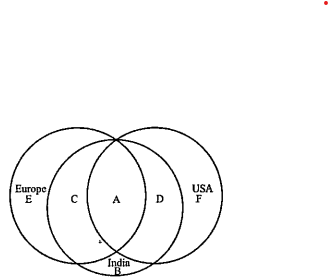
Which of the following represents such Indians as have travelled only to the USA and not to Europe?
1) Only F
2) Only D
3) A and D
4) D and F
5) C and F
View Solution
Knowledge Check
Questions given below are based on the given diagram for extractive metallurgy.
(iii) The make the following process spontaneous, temperature should be :
ZnO+C→Zn+CO.A<1000∘CB>1100∘CC<500∘CD>500∘C but<1000∘CQuestions given below are based on the given diagram for extractive metallurgy.
(ii) At this temperature ΔfGӨ of the reaction is
ZnO+C→Zn+CO.
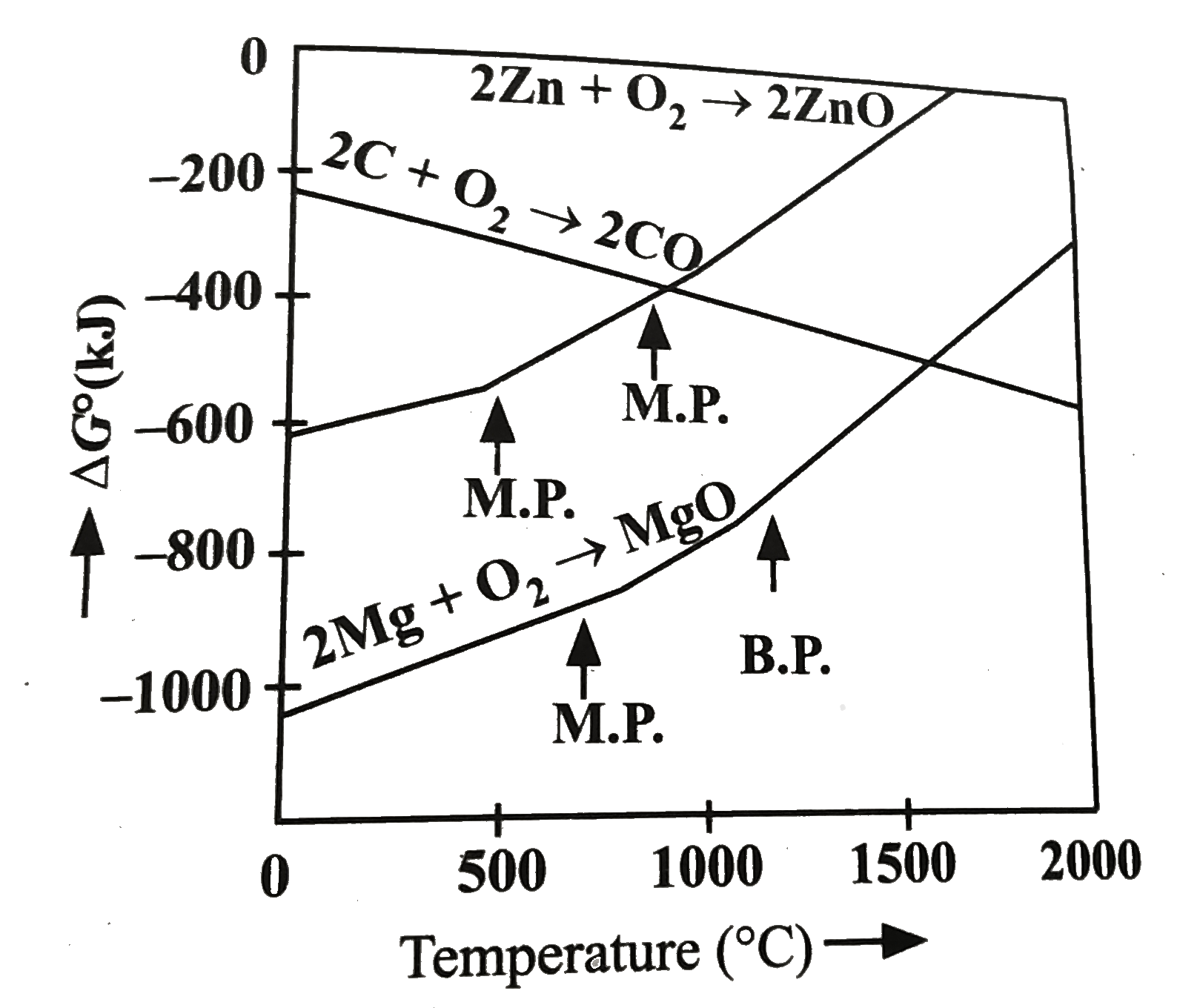 .A−veB+veCZeroDNothing can be said
.A−veB+veCZeroDNothing can be saidQuestions given below are based on the given diagram for extractive metallurgy.
(iv) At 1100∘C, which reaction is spontaneous to a maximum extent ?AMgO+C→Mg+COBZnO+C→Zn+COCMgO+Zn→Mg+ZnODZnO+Mg→MgO+Zn
Each of question given below is based on the given diagram. You have to take the given diagram to be true even if it seems to be at variance with commonly known facts and then decide which of the five alternatives following each question logically follows from the given diagram. The diagram comprises three circles showing people from three different countries who have travelled to either , both or none of the countries mentioned in the diagram.

Which of the following represents Indians who have travelled only to Europe but not to the USA?
1) Only C
2) Only B
3) Only A
4) A and C
5) Only E
View SolutionQuestion given below are based on the given diagram of extractive metallurgy.

The point noted by arrow are the melting and boiling points of the metals zinc and magnesium. ΔG∘ as a function of temperature for some reaction of extractive metallurgy.
At this temperature ΔG∘ of the reaction is:
ZnO+C→Zn+CO
View SolutionQuestion given below are based on the given diagram of extractive metallurgy.
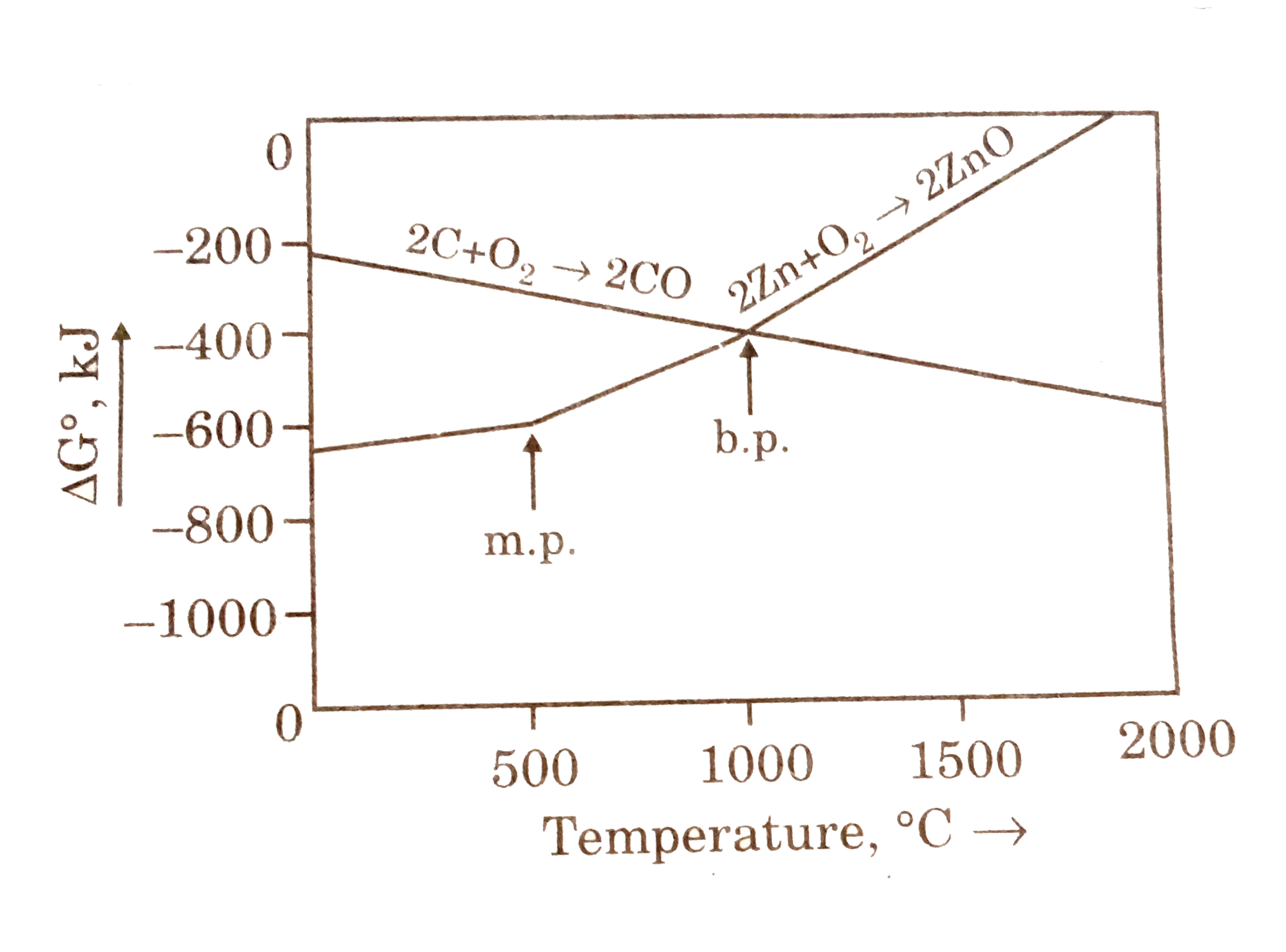
The point noted by arrow are the melting and boiling points of the metals zinc and magnesium. ΔG∘ as a function of temperature for some reaction of extractive metallurgy.
To make the following reduction process spontaneous, temperature should be:
ZnO+C→Zn+CO
View SolutionQuestion given below are based on the given diagram of extractive metallurgy.
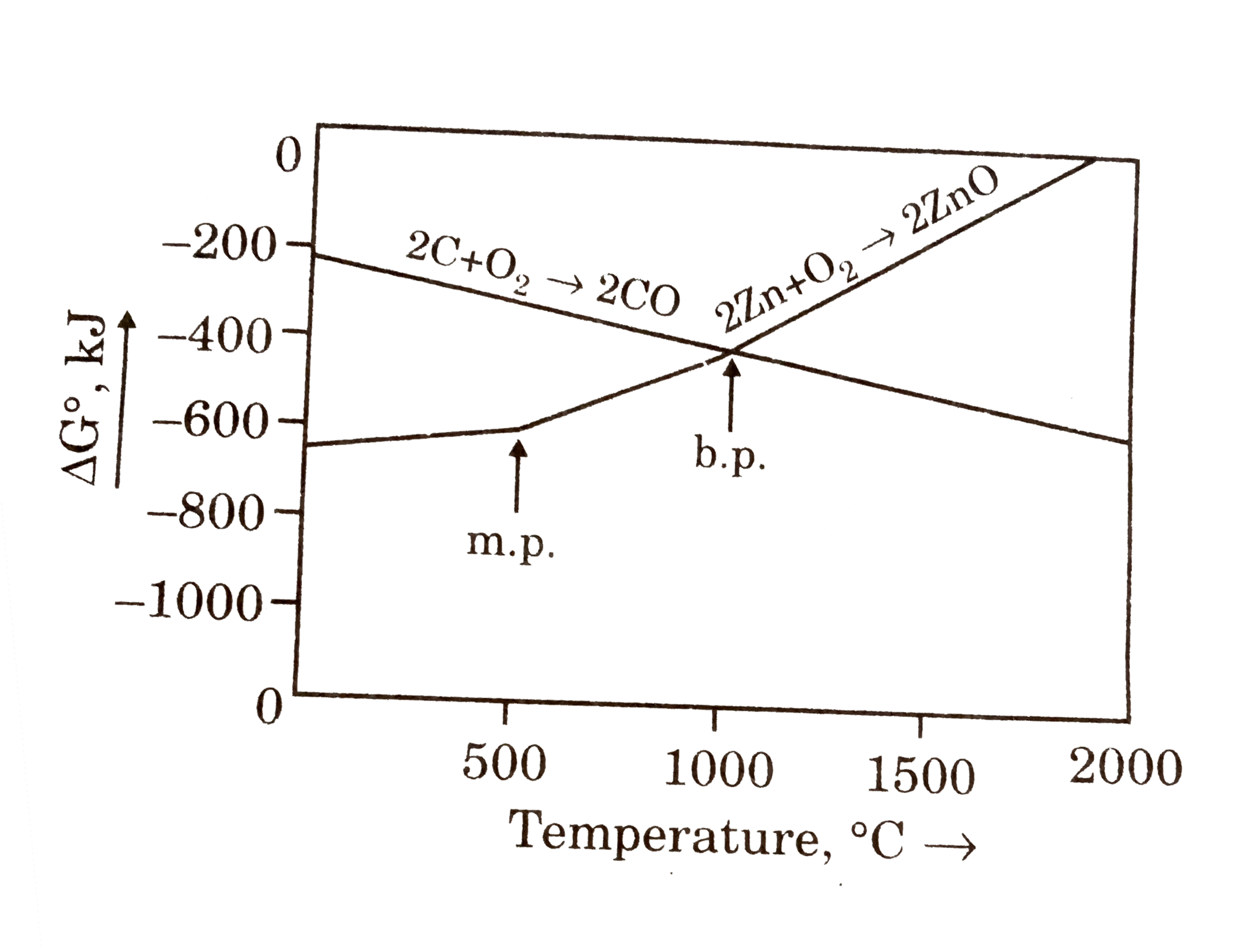
The point noted by arrow are the melting and boiling points of the metals zinc and magnesium. ΔG∘ as a function of temperature for some reaction of extractive metallurgy.
At what temperature, zinc and carbon have equal affinity for oxygen?
View SolutionQuestions given below are based on the given diagram for extractive metallurgy.
(i) At what approximate temperature, zinc and carbon have equal affinity for oxygen ?
View Solution

